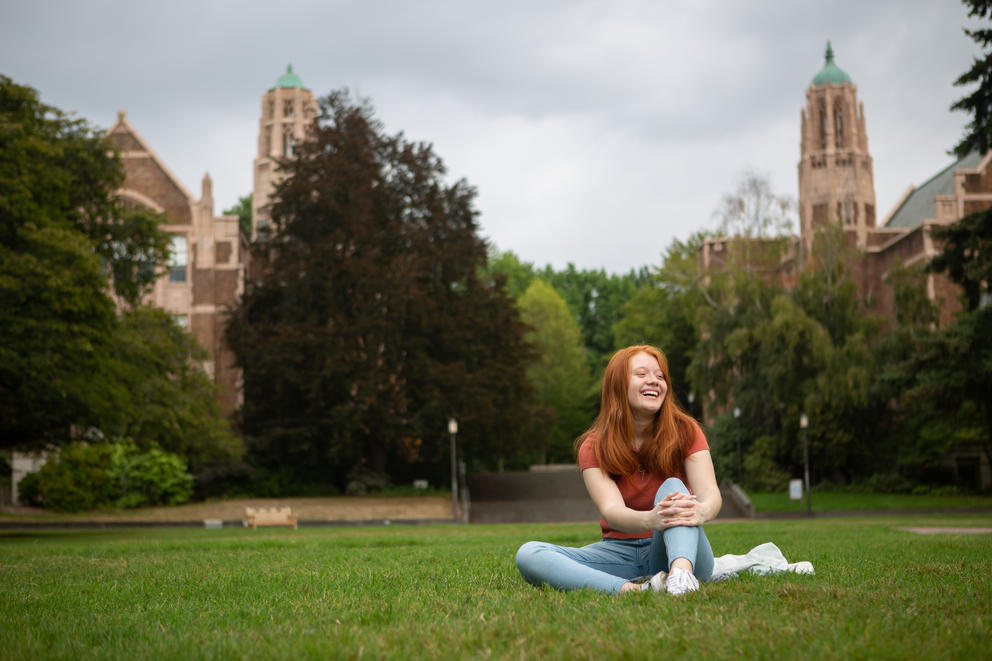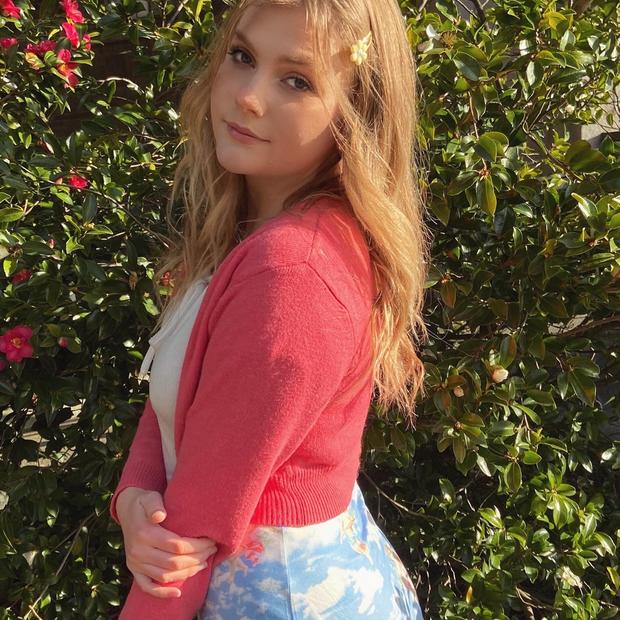Last year, when the COVID-19 health crisis shut down schools, Jimenez Romero was finishing her senior year at Franklin High School from home through a spotty internet connection. There was no prom, no point of a senior skip day and, most importantly for Jimenez Romero, no in-person graduation. She celebrated the culmination of 12 years of public education from her couch in South Seattle.
In Senior Year Was Crazy, a documentary released at the end of 2020, Crosscut followed Jimenez Romero’s transition from high school senior to college freshman through the lens of an iPhone. Despite the upheaval of many important life events because of the pandemic, Jimenez Romero kept the positive attitude her father always told her to keep. As she and many other students wrap up another milestone academic year under social distancing protocols, Jimenez Romero appears to have maintained that positivity.
“I really tried to come into college with no expectations, just because I knew this year would be very different,” Jimenez Romero said. “Overall it was still a good year to explore and get to know college.”
Because of her background in community organizing, Jimenez Romero initially wanted to study political science. Now, on a full-ride academic scholarship, she’s set to double major in law, society and justice as well as journalism, the latter inspired by her work on the documentary.
Jimenez Romero was student government president, editor of the yearbook and a varsity athlete at Franklin. For her freshman year at the UW, she decided not to get involved with any on-campus organizations, as she was already struggling with “Zoom fatigue.”
The UW’s mostly remote model and the state’s guidelines for social distancing made the customary college experience (parties, late nights at the library, simply sitting in a lecture hall) impossible for freshmen like Jimenez Romero.
She says she was able to make a small circle of friends on social media. She made a point to make more Latino and first-generation friends in college. According to Jimenez Romero, she is allowed only one other person in her dorm room at a time, and residents can eat in the dining halls only in pairs.
“If we had a group of four, we’d have to eat at two separate tables or we could go to a lounge with a capacity of five,” Jimenez Romero said. “We tried to navigate around the guidelines and be as safe as possible.”
Because of the safety guidelines for UW buildings, Jimenez Romero said she and her friends spend a lot of their time outside. The university’s Quad, famous for its brief pinkness when the cherry blossoms there bloom each spring, is one of her favorite spots.
She and her friends have fun where they can. The Ave, the busy street that runs through the University District, is lined with restaurants. Jimenez Romero said she has tried every boba shop on The Ave — no small feat. She also frequents Noodle Nation to get her Thai food fix.
“[Noodle Nation] is the best Thai food in the U District, but for me, it doesn’t compare to my favorite Thai place down where I’m from,” Jimenez said, referring to Thai Recipe Restaurant in South Seattle.
Coming into college, Jimenez Romero worried she might contract the virus. The University of Washington COVID-19 Case Tracking Dashboard reports 1,728 positive cases among staff, faculty and students tested on campus. For the first few months, she tried not to visit her family because her mother is at high risk.
Powered by the Seattle Flu Study team, the UW launched the Husky Coronavirus Testing Program, which has provided self-swab COVID-19 tests to UW students and faculty since September 2020. Jimenez Romero said she used to get tested once a week before she recently reached full vaccination.
Because she and her parents are fully vaccinated, Jimenez Romero now feels more comfortable seeing her family. The oldest of three, her younger siblings are always happy to see her.
“We have a bunk bed, so it used to be able to easily talk to her,” said Jocelyn, who sounds just like her sister, Jackie, over the phone. “Some nights I would try to talk to her, but then I would remember she wasn’t there.”
Although they keep up over FaceTime and a sibling group chat, Jocelyn said there’s no way to replicate their spontaneous late night chats and midnight snacks while her sister is on campus.
Jocelyn also had to take on new responsibilities when her sister left, from cleaning to helping her dad file taxes.
Jocelyn, a sophomore at Franklin, is still going to class remotely, opting out of the hybrid model the school offered. Initially, Jimenez Romero’s family used cellular data to access their digital classroom as they did not have reliable internet. They were not alone. According to Connect Washington over 280,000 children live in homes without high-speed internet. Nearly 100,000 of these children are Latino.
Eventually, Jimenez Romero’s family was able to connect to the internet through hot spots provided by their public schools. According to Jocelyn, securing that resource was a challenge and the internet is still less than ideal.
“It was really hard because we couldn’t go to school because the Wi-Fi would crash,” Jocelyn said.
The UW has Wi-Fi available to students all over campus. Jimenez Romero no longer has to worry about missing class because of problems with internet access. To help her family experience that same “relief,” Jimenez Romero used some of her scholarship money to pay for better Wi-Fi for her family.
Jimenez Romero is headed back home for the summer to take what she calls a “brain break.”
“At UW, I’m really happy with the ability to be independent, but there's still part of me that misses my home and my family and my community,” she said. “I know I’m still close, but it's a very different vibe in North Seattle compared to South Seattle.”
The UW, one of the first universities in the country to go remote, is set to have its most “normal” quarter since the pandemic began when it returns this fall with in-person learning and a vaccine requirement.
Jimenez Romero is excited just to learn inside of a UW building (although she said she knows they do not live up to the hype). But after missing the end of her K-12 experience, the biggest excitement is about three years down the line.
“I just had to adapt,” Jimenez Romero said of learning in COVID-19. “Now that I missed my high school graduation, I’m really excited for my college graduation.”



